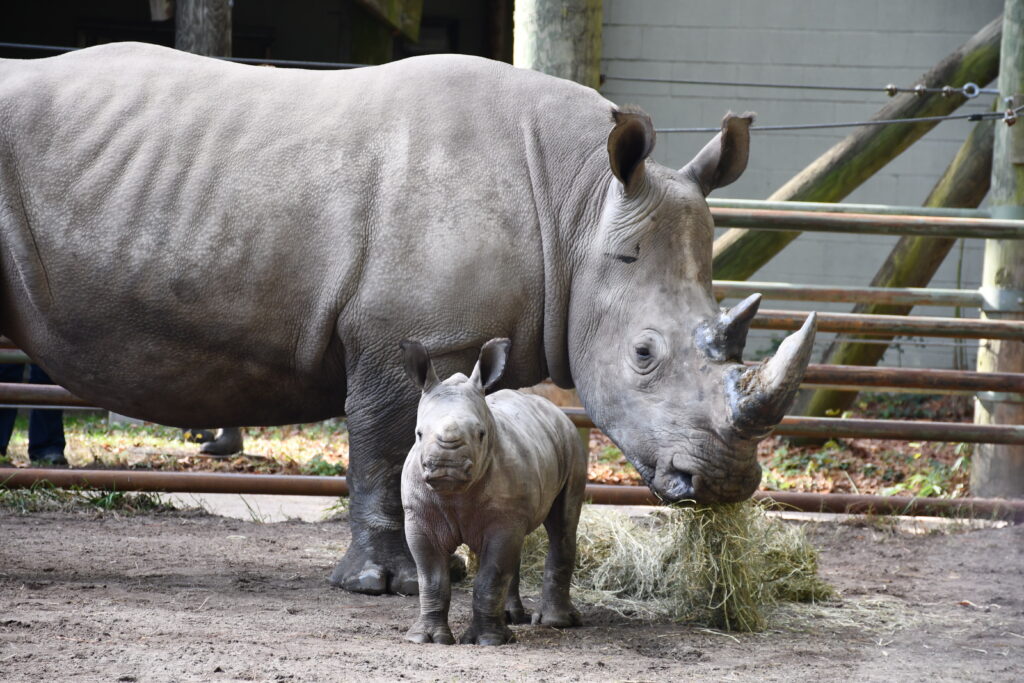Southern White Rhino
*This page is under renovation and all information may not be up-to-date or complete*
Description
Southern white rhinos are the second largest land mammals in the world, second only to elephants. These large animals have rough gray skin with hair only on their ears, tails, and eyelashes. They have two horns on their face, the front horn is much longer than the second horn.
Range & Habitat
Southern white rhinos are found in grassy savannas and woodlands interspersed with grassy clearings in South Africa, Zimbabwe, Namibia, and Kenya.
At the Virginia Zoo, southern white rhinos live on the African Safari Trail.
Behavior
Southern white rhino juveniles and females live in groups of up to 14 individuals. Males are generally solitary, only seeking out females to mate.
This species keeps cool by rolling around in shallow mud pools.
Diet
Southern white rhinos are herbivores, spending most of their days grazing on short grasses. In fact, they must eat up to 120 pounds of grass per day to sustain themselves.
Conservation
Southern white rhinos are threatened by habitat loss and poachers that hunt them for their horns.
Fun Facts
- The name white rhino comes from the Afrikaans word “wyd” used to describe their wide mouths. English speakers misinterpreted “wyd” to mean “white”.
- Rhinos can run at speeds of 30-40 miles per hour!
- Rhinos have sharp hearing and a keen sense of smell but poor eyesight. They use scent trails to find each other.
Virginia Zoo Animals
Male: Sibindi (born: 1/1/2006) & Mosi (born: 7/11/2021)
Females: Zina (4/27/2013), Bora (12/23/2013), & Letti (born: 11/09/2023)

Scientific Name
Ceratotherium simum
IUCN Conservation Status
Near Threatened
Size
Length: 10-16 feet
Weight: 3,700 – 5,100 lbs.
Life Expectancy
40-50 years